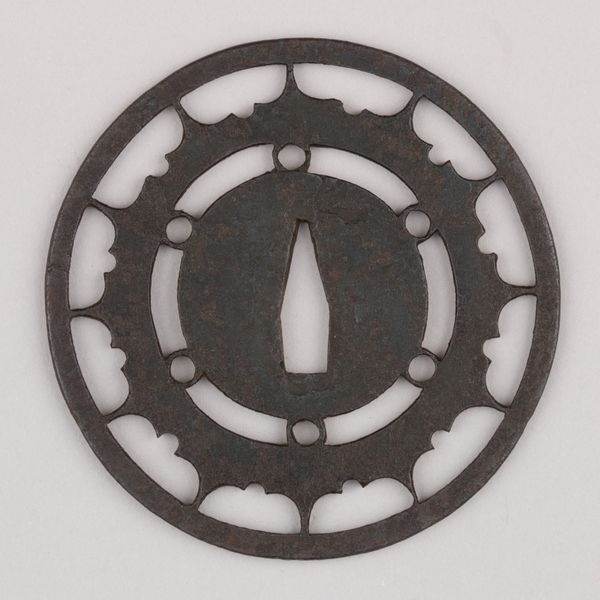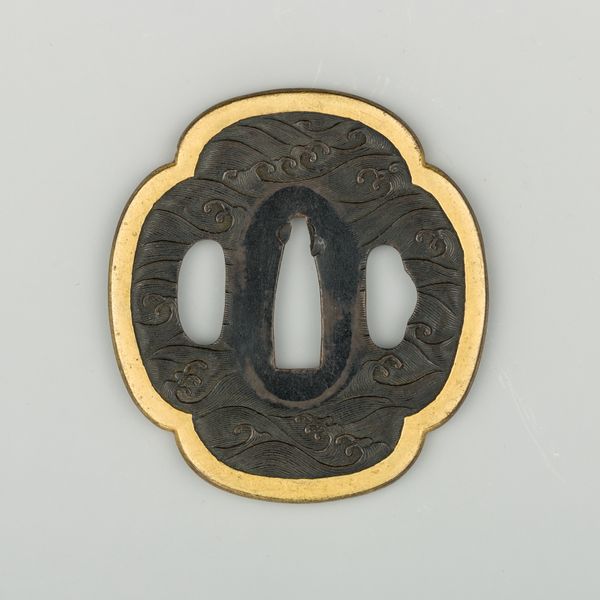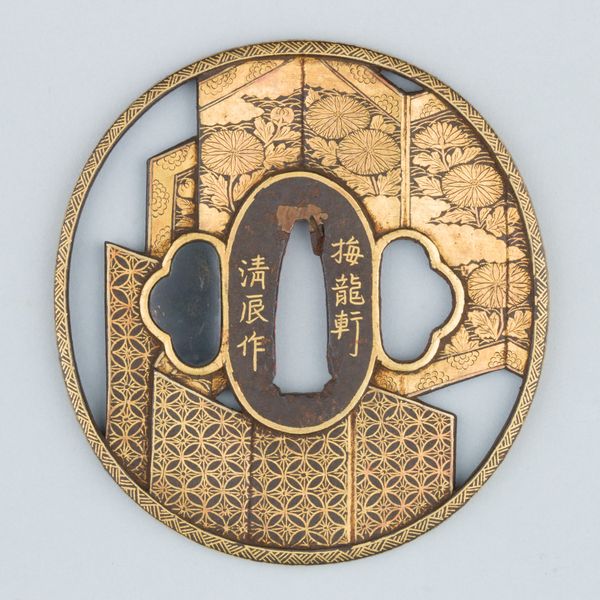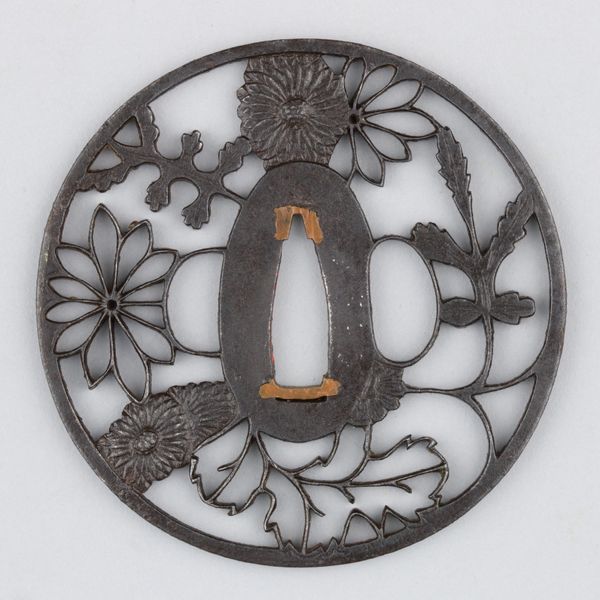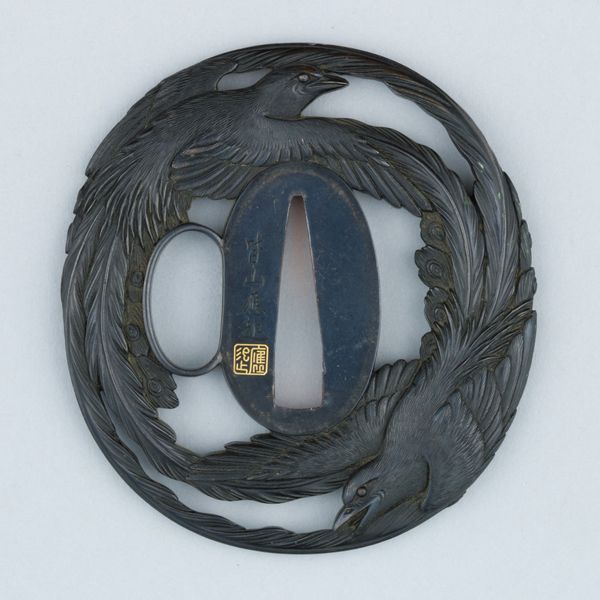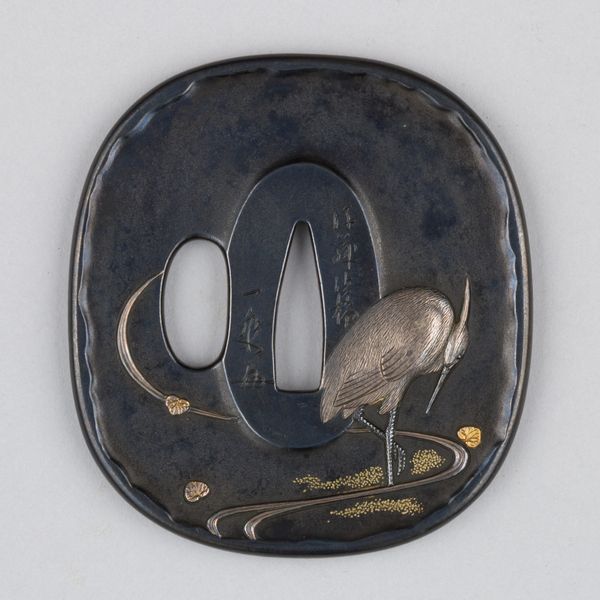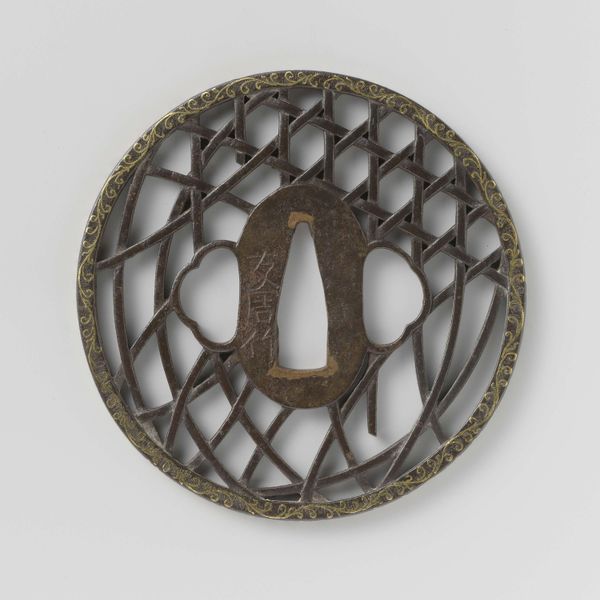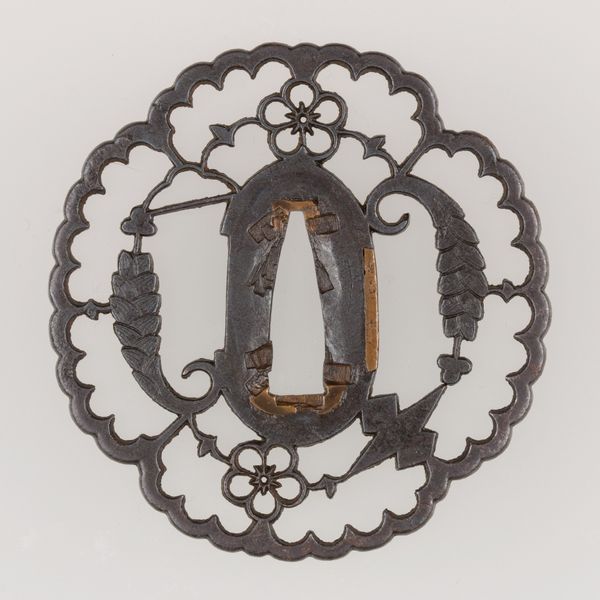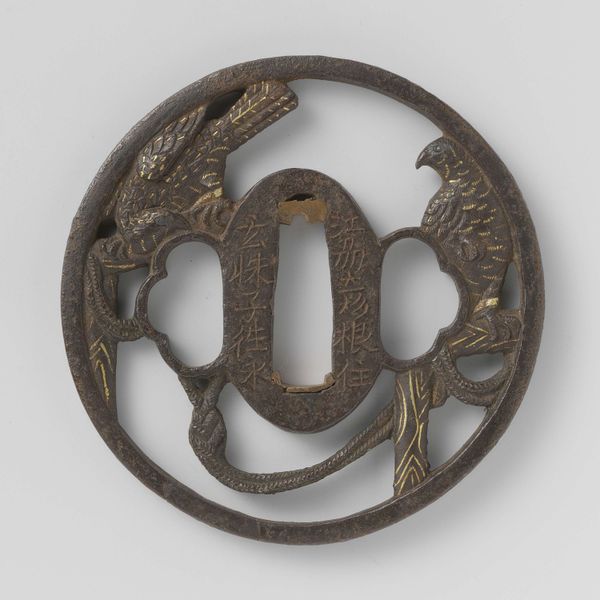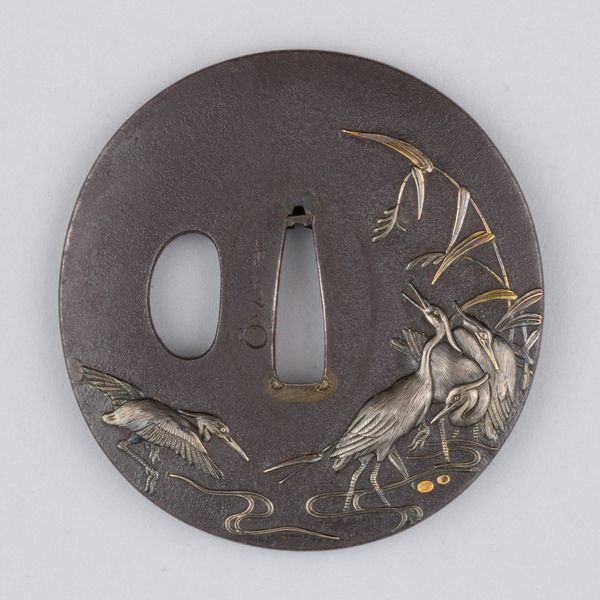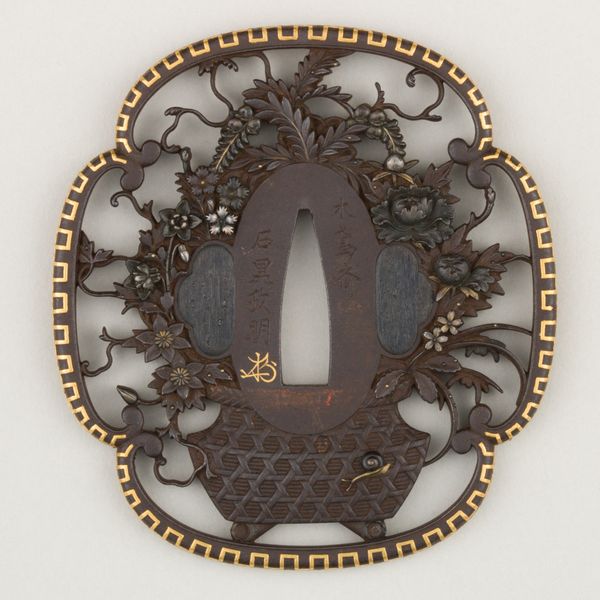
metal
#
metal
#
sculpture
#
asian-art
#
sword
Dimensions: H. 3 1/4 in. (8.3 cm); W. 3 1/8 in. (7.9 cm); thickness 1/4 in. (0.6 cm); Wt. 4.5 oz. (127.6 g)
Copyright: Public Domain
Curator: What catches your eye immediately about this piece? I find the stark metalwork creates an undeniable feeling of tension. Editor: Definitely a raw, almost aggressive elegance, wouldn't you agree? But let's start by telling everyone what we're looking at. This is a sword guard, or tsuba, from 18th-century Japan, made by an artisan from the Akasaka school. You can find it here at the Metropolitan Museum of Art. Curator: Thank you, exactly! What strikes me is how functional a sword guard is at its core: designed for protection, for war even. Then an artisan transforms it with these beautiful—though seemingly simple—lines into something considered "art". Who makes such an object, how does its function affect that making? Those details are key. Editor: Agreed, context is important. However, the visual rhythm the artist created, how the negative spaces play against the wrought iron... It’s stunning how something meant to defend can be so open, permeable. Consider its composition: The center is clearly defined, but the "branches" extend and reach. It is more than protection. Curator: See, for me, the medium – that unforgiving metal - speaks volumes about the blacksmith's skill. The metal itself demands a laborious process that’s deeply rooted in material practice. We also can’t overlook how sword culture impacted art of the time. This wasn’t simply decoration, right? Swords embodied status, duty. Editor: Certainly not simply decoration. Its beauty derives from a reduction of form, a controlled restraint within that metal. It directs the eye, doesn't it? It speaks to both the rigor and the artistry valued in feudal Japan. Even its circular shape conveys meaning. Curator: The circulation and the re-circulation through art. The circulation through trade. That’s interesting, the way meaning changes depending on access. Now, held safely behind glass, what do we see? Is there meaning beyond status to find? Editor: It shows, I believe, that strength lies in a refined simplicity and an unwavering execution. A tsuba serves its deadly purpose while presenting such sophisticated beauty. I feel moved every time I examine its meticulous details. Curator: Meticulous details—for me it serves as a reminder that every artifact holds stories of labor and cultural value we must unveil through constant analysis of each mark!
Comments
No comments
Be the first to comment and join the conversation on the ultimate creative platform.
